Wondermondo 🢖 World 🢖 Wonders of Africa 🢖 Wonders of Madagascar
Territory
Wonders of Madagascar
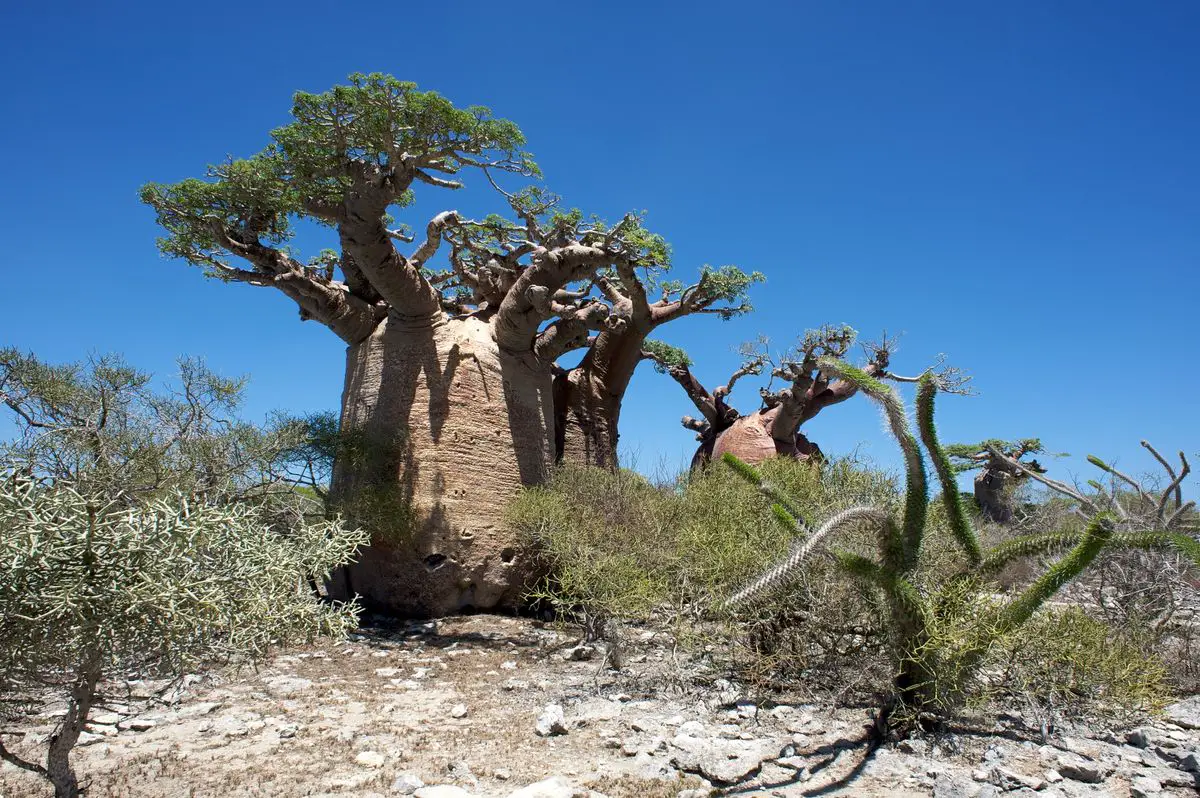
 Highlights
Highlights
Madagascar is very rich with surprising natural landmarks – created both by geological processes and living nature.
Wondermondo does not list large natural complexes – such as Amazon Rainforest or Great Barrier Reef. Thus there are not described such wonders of Madagascar as the unique rainforest or the otherworldly dry forest of Andrefana. Bu some of the most amazing smaller wonders of Madagascar are:
- Karst features. Unique are tsingy – "forests" of giant limestone blades. Most impressive is the Great Tsingy of Bemaraha. Very interesting are also enormous sinkholes and diverse caves – f.e. some isolated patches of primeval forest on the bottoms of giant sinkholes in Ankarana are available only through crocodile-infested cave rivers.
- Unusual ecosystems teeming with endemic animals and plants. Some 75% of Madagascar’s animals and plants are found only here and numerous species are found only in certain small patches of forest or mountains. The dry forest of southern Madagascar represents a very unusual ecosystem, visually very different from other ecosystems of the world.
- Gorgeous and rare gemstones. Almost anywhere in Madagascar can be found gemstones. Here are found some of the most beautiful sapphires, beryls, and tourmalines in the world. In Madagascar have been found the largest crystals in the world – up to 18 m long beryls. Unsurpassed is the beautiful labradorite from southern Madagascar and nowhere else in the world can be found that large crystals of rhodizite – londonite.
Map with the described wonders
If you see this after your page is loaded completely, leafletJS files are missing.
 Top 25 wonders of Madagascar
Top 25 wonders of Madagascar
Geological wonders of Madagascar
Great Tsingy de Bemaraha
Menabe
Unique karst landscape with thousands of rock blocks dissected by 80 – 120 m deep grikes. Sometimes these grikes are less than 1 m narrow. Many endemic species of plants and animals – 47% of locally met species of plants and animals are found only here – e.g. 34 endemic species of reptiles.
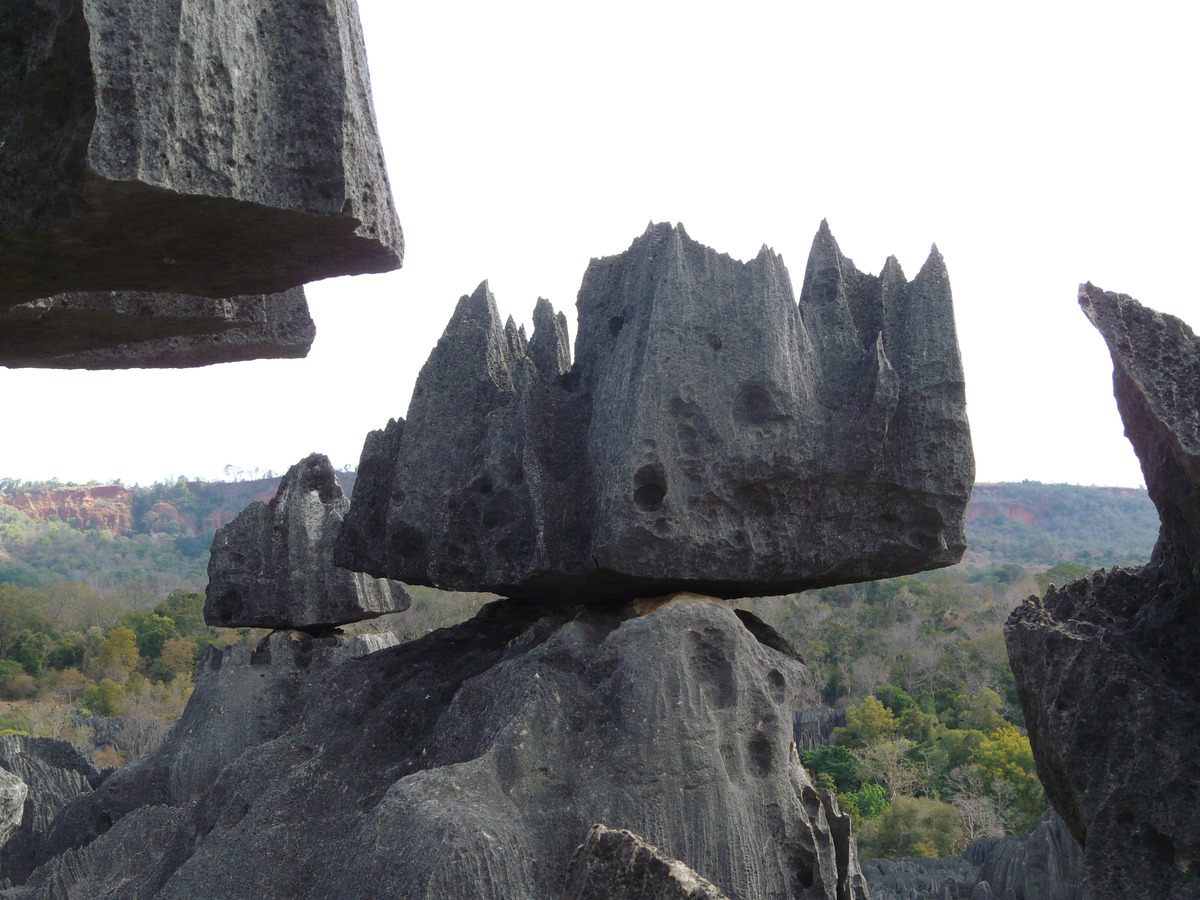
Tsingy de Ankarana
Diana
Spectacular tsingy – a karst formation, where a layer of middle Jurassic limestone is dissolved by water, leaving a "forest" of limestone blades. Separate blades might be up to 20 m high. The gorges and canyons dissecting the Ankarana are up to 140 m deep. In many larger gorges and canyons exist patches of primeval tropical forest with numerous endemic species of plants and animals. Some of these forests are available only through caves – the total length of explored caves in the region exceeds 100 km. Up to 6 m long Nile crocodiles live in the caves of Ankarana (mostly in River Styx – 4 km long subterranean passage passable only by a boat). This is one of the few places where crocodiles live in Madagascar (it is seen also in Belomotse Forest and some other places) and a unique case where crocodiles live in caves. Numerous fossils of the extinct Madagascar fauna are found here.
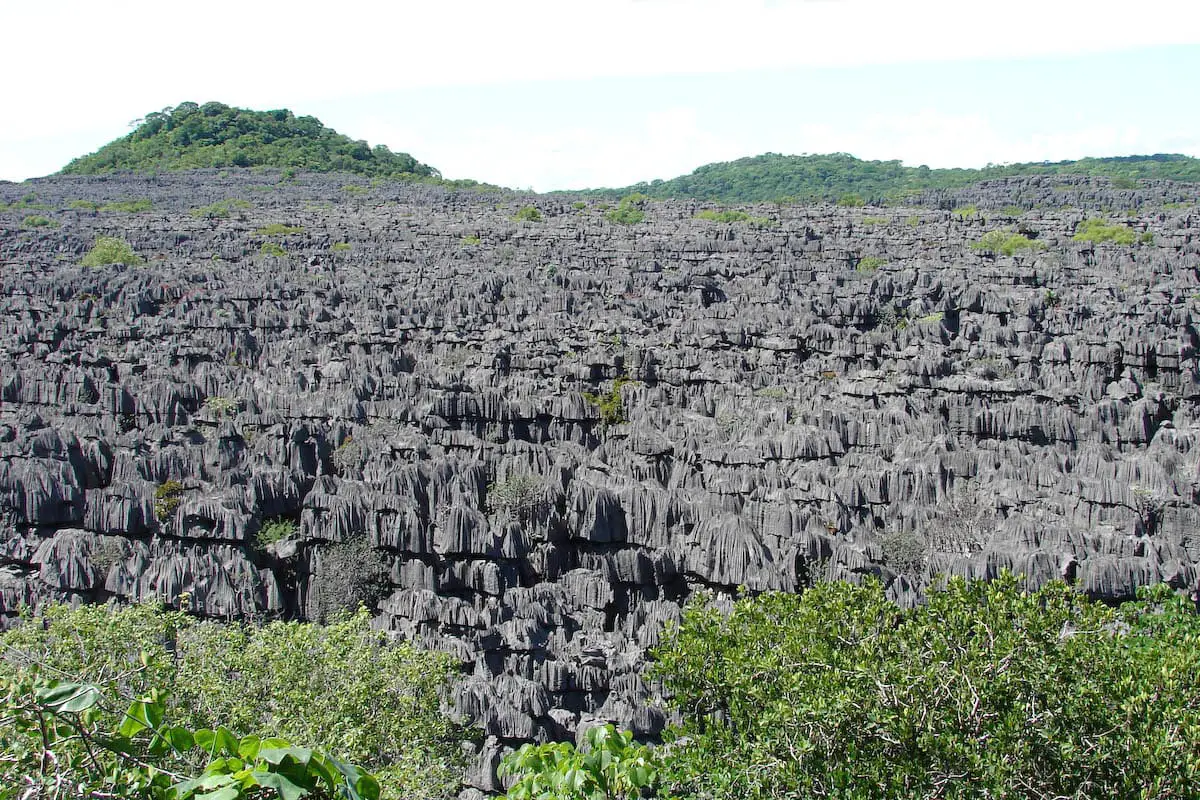
Grottes d’Anjohibe (earlier – Grotte de Andranoboka)
Boeny
5,330 m long cave system with gorgeous speleothems, part of the extensive Andranoboka cave system. Cave has a river and is rich with fauna. Stories about the haunting of Vazimbe. Here have been found fossil remnants of extinct fauna of Madagascar including a well-preserved skull of Archaeolemur sp. cfa. edwardsi. Found also remnants of the extinct Hippopotamus lemerlei.
Tsingy de Namoroka
Boeny
An area with very impressive, up to 80 m tall tsingy formations – walls, needles, canyons, and also numerous caves.
Canyon des Makis, Canyon des Singes, Namazaha Canyon, and others
Ihorombe
Beautiful, up to 200 m deep canyons through Isalo Massif. On the bottom of canyons grow forests where up to seven species of lemurs can be met. Canyons of Isalo serve as refuges of earlier, more wet climates, and here live numerous endemic species of plants and animals.
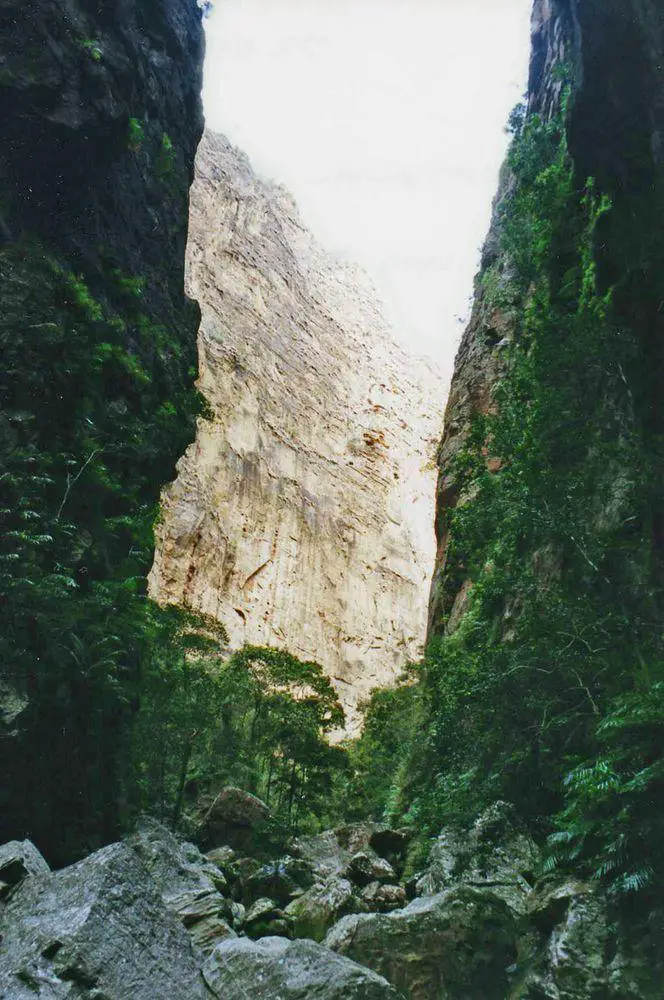
Anjajavi Forest
Sofia
A picturesque karst area that is covered with pristine Madagascar dry forest. The limestone here has unusual forms – countless natural arches, hoodoos, caves, and others, rising as small islands from Moramba Bay, all covered with unusual plants, such as baobabs. An area with special biological diversity and numerous rare and unique species.
Manambolo River Gorge
Menabe
A spectacular gorge – both banks of the river are formed by giant, steep, and often overhanging cliffs of Bemaraha Tsingy. Numerous caves, natural bridges, and other interesting karst formations.
Sept Lacs Valley
Atsimo-Andrefana
A group of seven lakes divided by tufa walls. Over these walls have formed spectacular waterfalls.
Tsaranoro Be monolith
Ihorombe
One of the largest granite monoliths in the world, with an 800 m high, nearly vertical cliff face.
Andrahomana Cave
Anosy
Scientifically important and visually impressive cave. Starts with two enormous sinkholes with a natural bridge between them and a rainforest on the base of the sinkholes. In this cave have been found remnants of 27 species of birds, 42 species of mammals, 10 reptiles, and 3 amphibians, providing rich knowledge about the fossil fauna of Madagascar.
Kianjavato Emeralds
Vatovavy-Fitovinany
Here, in the tropical forest are found some of the finest emeralds in the world.
Styx 2 sinkhole
Diana
Large and impressive sinkhole in Ankarana karst region, 500 by 400 m wide and 140 m deep.
Ankilitelo Cave (Aven des Perroquets, Kintsia’ny Sihothy)
Atsimo-Andrefana
The deepest known cave in Madagascar. This cave starts with more than 145 m deep, narrow pit and the total depth is 230 m. The cave is very rich with fossils of extinct Madagascan animals.
Malakialina pegmatites
Amoron’i Mania
Rich find of beryls, where reportedly is (or was?) located the largest crystal in the world. This beryl crystal is 18 m long, with a 3.5 m diameter, and weighs 380 tons. Here has been mined beryl, columbite-tantalite.
Grotte de Milaintety
Diana
A beautiful cave in Tsingy de Ankarana. It is adorned with numerous speleothems.
Ambatoharanana Cave (Grotte des Crocodiles)
Diana
The longest known cave in Madagascar, 18.1 km long.
Biological wonders of Madagascar
Adansonia perrieri stand near Cascade d’Antomboka
Diana
The only sizeable stand of the rarest baobab in the world. Here the trees are up to 25 m tall, with large girth.
Avenue of the Baobabs
Menabe
Beautiful alignment of Madagascan baobabs Adansonia grandidieri. A group of stout, majestic, up to 30 meters high baobabs are located around a dirt road, creating a unique landscape. The landscape is not natural – initially the approximately 800 years old trees were growing in a dense forest that has been cleared away.
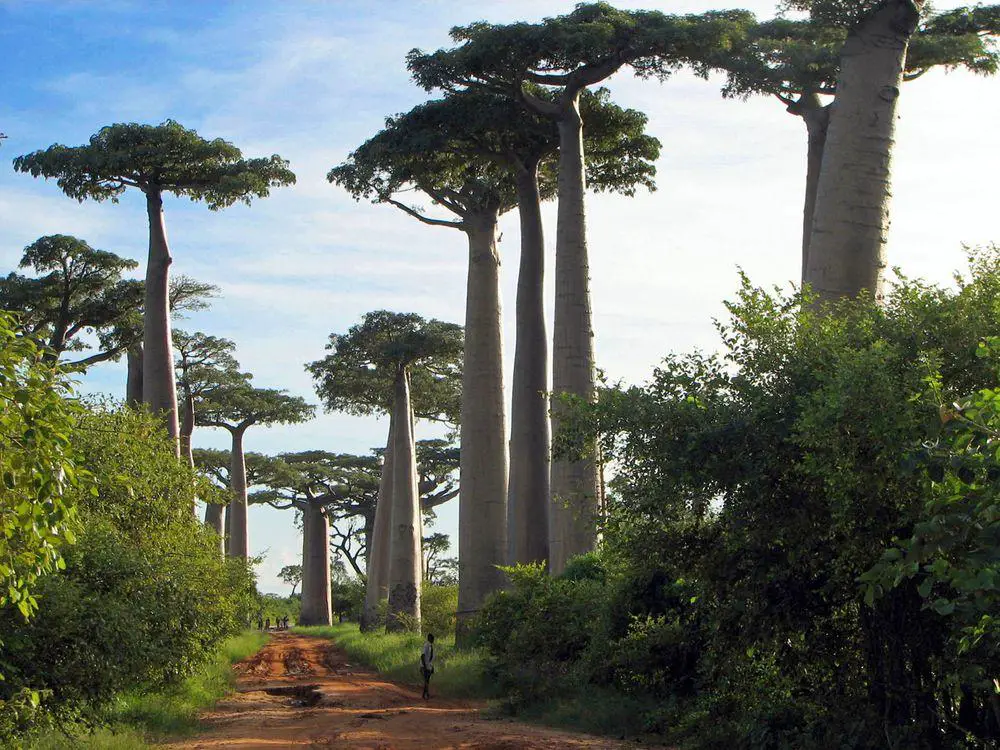
La Grand-Mère Baobab of Tsimanampesotse
Atsimo-Andrefana
Imposing baobab in the dry forest near Tsimanampesotse Lake. This tree has a circumference of over 20 meters, it is considered to be 3000 – 4000 years old. The trunk is covered with countless bulges.
Baobab Amoureux – baobabs in love
Menabe
Two magnificent baobabs (Adansonia za) here have twisted together like two inseparable lovers.
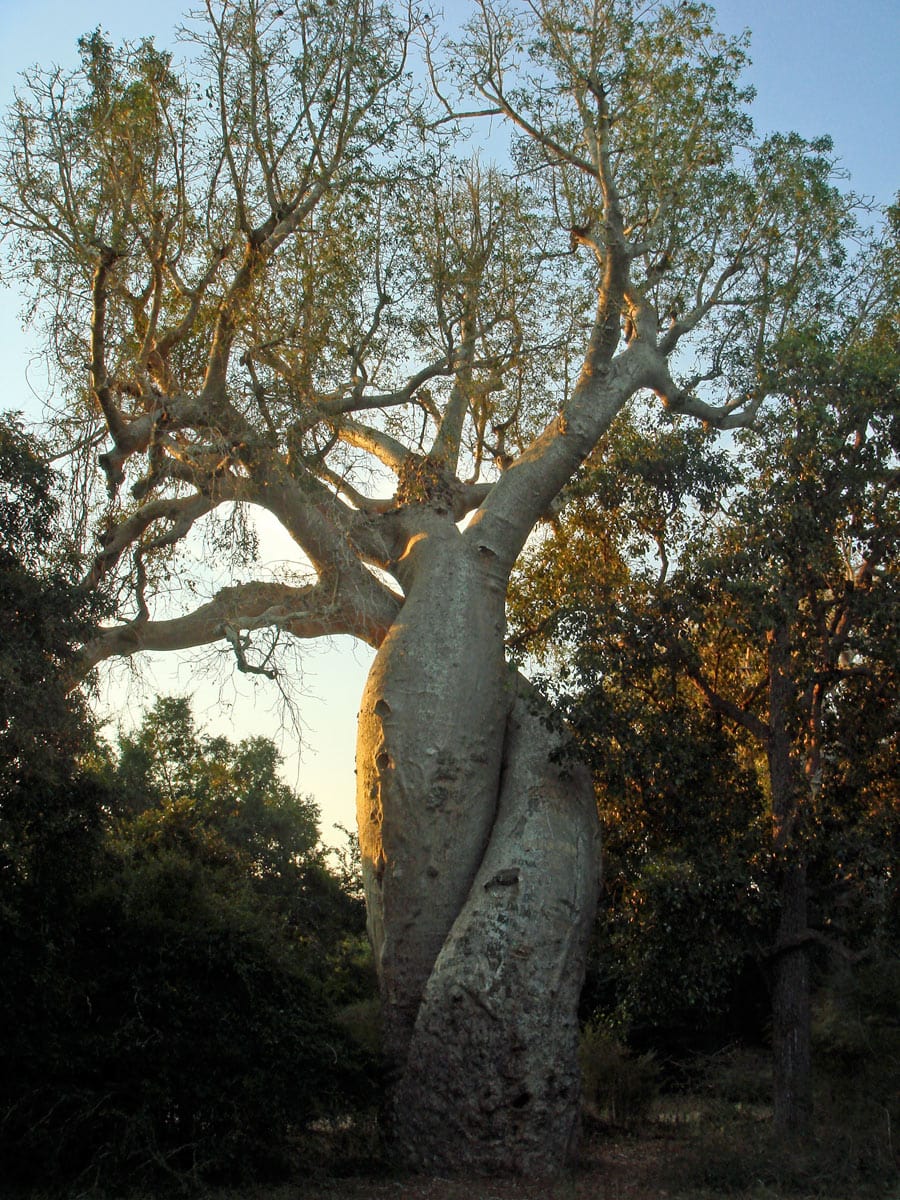
Baobabs of Mangoky Valley
Haute Matsiatra
Possibly the stoutest Grandidier’s baobabs (Adansonia grandidieri) in the world, diameter of up to 7 meters.
Architecture wonders of Madagascar
Ambohimanga
Analamanga
Fortified royal settlement and royal burials on a hilltop. Developed since the early 18th century. Fortifications have seven gates. The largest gate was protected with an enormous stone disc that every morning was pulled aside and in the evening – rolled back. Contains Mahandrihono palace made of rosewood – the most valuable example of royal wooden architecture in Madagascar.
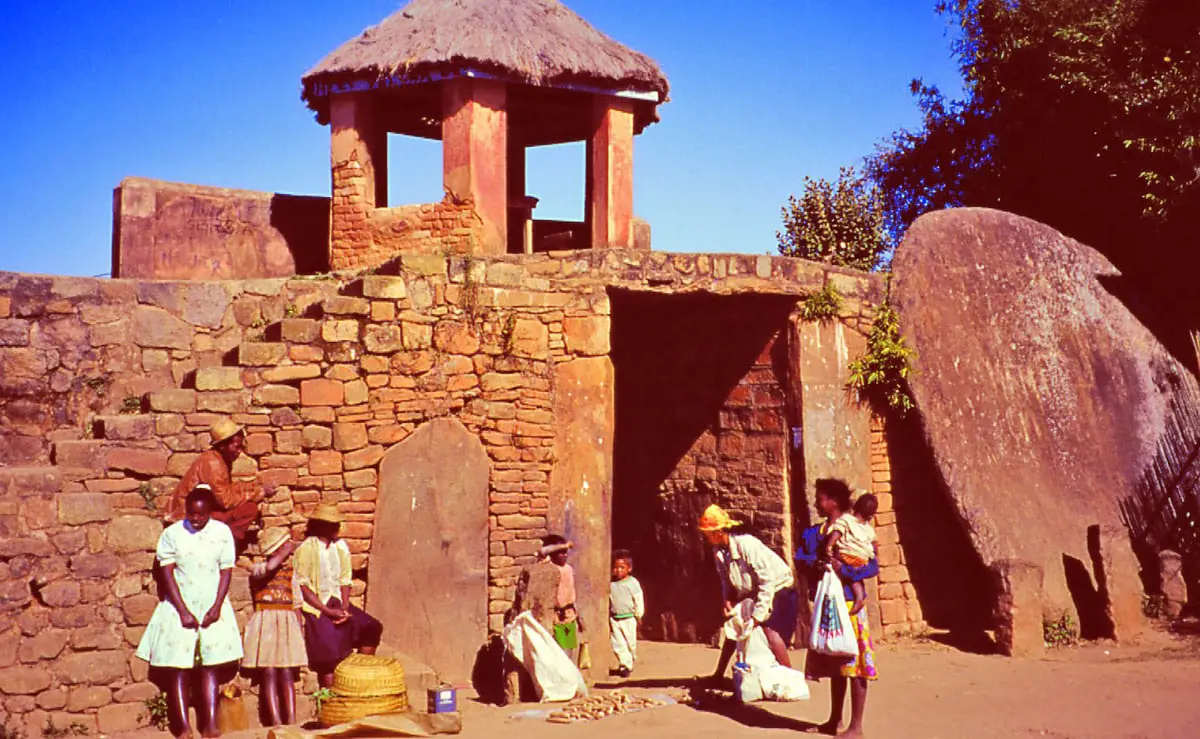
Ifasina
Atsinanana
A rural village, an example of the woodcarving skills of the Zafimaniry people. Earlier this art of woodcarving was widespread in Madagascar. The wooden houses can be dismantled and moved elsewhere upon necessity.
Rova of Antananarivo
Analamanga
A historical royal quarter of Madagascar rulers. Located on a high hill that towers above Antananarivo. The site contains a set of 20 stone and wooden palaces and shrines with intricate, original architecture. Most impressive is Queen’s Palace – Manjakamiadana, an interesting building is also the wooden palace Tranovola.
Sakalava tombs in Isalo
Ihorombe
Rock-cut tombs in the cliffs of Isalo Massif. Tombs are blocked by large rocks and often are very hard to find. These tombs represent a living burial tradition of local people.
 Recommended books
Recommended books
The Eighth Continent:: Life, Death, and Discovery in the Lost World of Madagascar
Madagascar, the world’s fourth-largest island, is a land where lizards scream and monkey-like lemurs sing songs of inexpressible beauty. Where animals and plants that went extinct elsewhere millions of years ago — tenrecs, fossa, upside-down trees — thrive in a true Lost World. Where the ancestors of the Malagasy, as the island’s eighteen tribes are collectively known, come alive in rollicking ceremonies known as “turning the bones.”
For the Love of Lemurs: My Life in the Wilds of Madagascar
In 1986, primatologist Patricia Chapple Wright was given a seemingly impossible task: to travel to the rainforest of Madagascar and find the greater bamboo lemur, a species that hadn’t been seen in the wild for thirty years. Not only did Wright discover that the primate still existed but that it lived alongside a completely new species. What followed was a love affair with an animal and a country that continues to this day.


